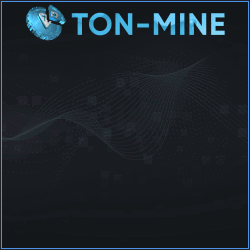ARTICLE AD BOX
TLDR:
- Ethereum co-founder Vitalik Buterin stressed that stablecoin payments remain one of the largest sources of value in crypto today.
- Codex, built on Ethereum, positions itself as a dedicated stablecoin layer two with fast-growing adoption.
- Codex aims to cut fiat on- and off-ramp costs, making stablecoin payments viable in more global trade corridors.
- Ethereum continues to anchor liquidity and security, while Codex expands transaction efficiency for stablecoin flows.
Cheap payments have always been a selling point for crypto. Ethereum’s Vitalik Buterin is doubling down on that. He pointed to stablecoin transfers as one of the most useful ways people already use blockchain. It’s not just about DeFi, trading, or speculation.
Payments in stablecoins are fast, accessible, and often cheaper than traditional rails. That’s where Buterin sees the biggest real-world use case continuing to grow.
Stablecoin Payments on Ethereum Take the Spotlight
In a post on social platform X, Buterin said low-cost stablecoin transfers stand out as a real driver of adoption. He added that Codex, a new Ethereum-based layer two, is targeting this space directly from launch.
Codex, described by some as Ethereum’s “stablecoin SpecOps team,” is positioning itself differently than other L2 networks. According to comments from Codex co-founder Haonan, the project focuses only on stablecoin use cases rather than broad applications.
The aim is to keep transaction costs low and streamline how stablecoins interact with fiat systems.
The team emphasized that Ethereum remains the natural home for stablecoins. They pointed to its decade-long uptime, deep liquidity, and role as the base layer trusted by institutions. Other chains like Tron dominate transaction counts, but Codex believes Ethereum plus a dedicated L2 will be a stronger long-term solution.
Codex is not just running payments faster. The group said it is building systems like Avenue, a facility designed for stablecoin swaps with fiat and between tokens. The focus is on cutting settlement time and banking friction that still slow cross-border payments today.
Cheap stablecoin transactions continue to be one of the most important sources of large-scale value that crypto provides today.
Excited to see @codex_pbc joining the arena as an L2 and thinking explicitly about synergy between itself and ethereum L1 from day one. https://t.co/BuCyZZqYgh
— vitalik.eth (@VitalikButerin) September 5, 2025
Codex Pushes for Crypto Payment Integration
Haonan explained that Codex spends as much time in traditional industries as in code. Business development teams work with payment providers and emerging market companies to test stablecoin rails in real conditions.
One example was a study with Southeast Asian lumber operators. The team said on-the-ground research helps them design tools that businesses can actually use. This kind of embedded approach, they argued, is rare among blockchain projects.
Codex also made clear that it sees competition. Alternatives like Plasma on Bitcoin, Circle’s Arc, and Stripe’s Tempo aim to pull stablecoins to new bases. Codex maintains that Ethereum, combined with its specialized L2, will withstand these challenges.
To reinforce alignment, Codex plans to distribute dividends to Ethereum validators and client teams. The group said this model could become a template for future L2s. With this structure, Codex positions itself as both an extension of Ethereum and a challenger to Tron’s payments dominance.
 2 hours ago
202
2 hours ago
202










 English (US) ·
English (US) ·